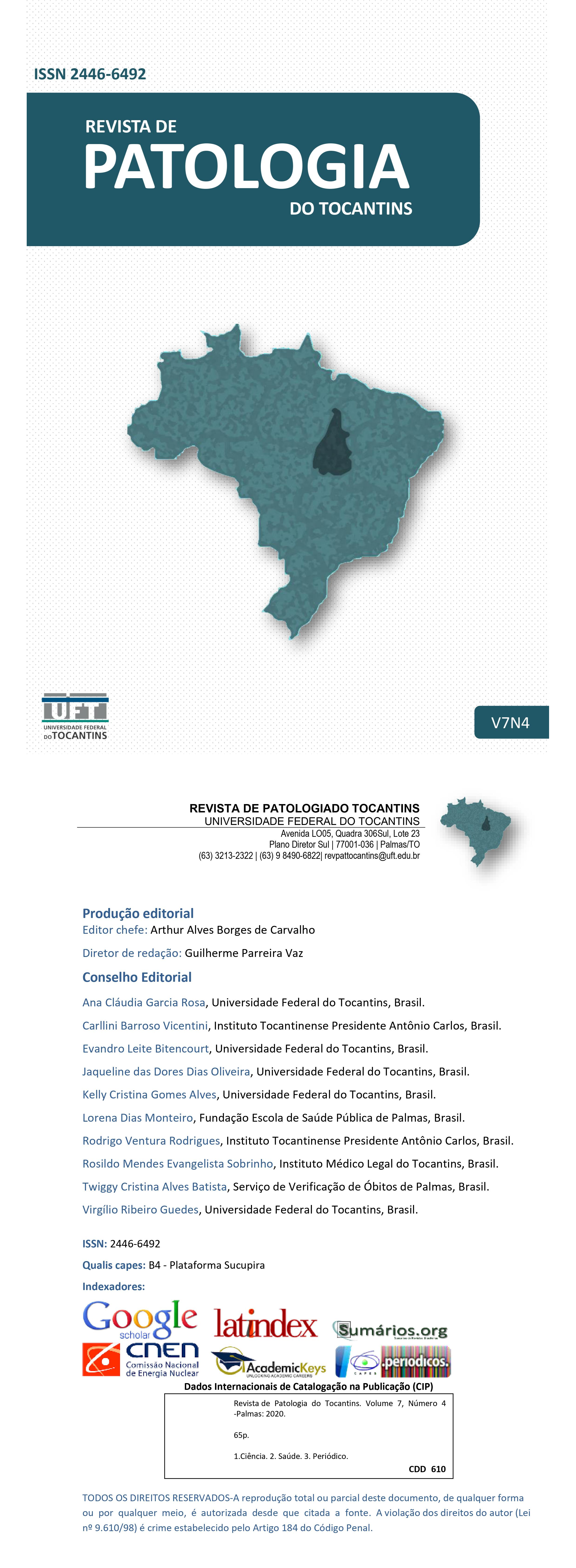Relato de caso: Luxação testicular por trauma
DOI:
https://doi.org/10.20873/uft.2446-6492.2020v7n4p26Resumo
Resumo: Introdução: A luxação testicular após trauma perineal contuso é um evento raro, que ocorre principalmente em acidentes de motocicleta e traumas por montaria em cavalos. Devido à sua raridade e por estar geralmente associada com outras lesões graves, pode haver demora em seu diagnóstico e tratamento. O diagnóstico pode ser estabelecido no exame físico com a ausência de testículo no saco escrotal. Tomografia computadorizada (TC) e ultrassom com doppler também são ferramentas úteis no diagnóstico dessa condição. O tratamento pode ser realizado com redução manual ou cirurgia. Desenvolvimento: MJFS, masculino, vítima de acidente motociclístico com trauma contuso de pelve e membros inferiores. Durante a avaliação inicial foi constatada fratura de membro inferior esquerdo e disjunção da sínfise púbica. O paciente foi submetido a alinhamento do membro inferior e optou-se pelo tratamento conservador da disjunção púbica. Após um mês do acidente o paciente relata dor pélvica à esquerda. Ao exame físico foi constatada a ausência do testículo na bolsa escrotal esquerda com massa palpável dolorosa na região pélvica esquerda. Foi realizada então uma TC de pelve que mostrou o testículo esquerdo ectópico em tecido subcutâneo externo ao canal inguinal esquerdo. MJFS foi submetido à cirurgia para liberação e inserção do testículo na bolsa escrotal. O procedimento se deu sem intercorrências e o paciente recebeu alta em bom estado geral. Considerações finais: A luxação testicular é um evento facilmente detectado em exame físico. Pode provocar complicações como ruptura testicular, atrofia testicular, malignidade futura, infertilidade e disfunção endócrina, além de poder se associar com outras lesões como as de trato urinário. Dessa forma, é importante estar atento para sua ocorrência diante de um trauma pélvico.
Abstract: Introduction: Testicular dislocation after blunt perineal trauma is a rare event, which occurs mainly in motorcycle accidents and horse riding trauma. Due to its rarity and because it is usually associated with other serious injuries, there may be a delay in its diagnosis and treatment. The diagnosis can be established on physical examination with the absence of a testicle in the scrotum. Computed tomography and doppler ultrasound are also useful tools in the diagnosis of this condition. Treatment can be performed with manual reduction or surgery. Development: MJFS, male, victim of a motorcycle crash suffered a hip and lower limb contusion. During the initial evaluation, fracture of the left lower limb and a pubic disjunction were observed. The patient underwent lower limb alignment and conservative treatment of the public disjunction. After one month of the accident, the patient referred left pelvic pain. The physical examination revealed absence of the testicle in the left scrotum and a bulge in the left pelvic area, with tenderness. Then, a computed tomography (CT) scan was performed, which showed a left ectopic testicle in the subcutaneous tissue external to the left inguinal canal. MJFS underwent surgery to release and insert the testis into the scrotum. The procedure was uneventful and the patient was discharged without major complaints. Final considerations: Testicular dislocation is an easily detected event on physical examination. It can cause complications such as testicular rupture, testicular atrophy, future malignancy, infertility and endocrine dysfunction, in addition to being associated with other injuries such as urinary tract injuries. Thus, it is important to be aware of its occurrence in the face of a pelvic trauma.
Downloads
Publicado
Como Citar
Edição
Seção
Licença
Os autores declaram para os devidos fins de direito e obrigações, sob as penas previstas na Legislação vigente, que são autores/detentores dos Direitos Autorais do trabalho proposto nos termos dos artigos 28 a 33 da Lei Federal nº9.610 de 19 de fevereiro de 1998 (Lei dos Direitos Autorais).








